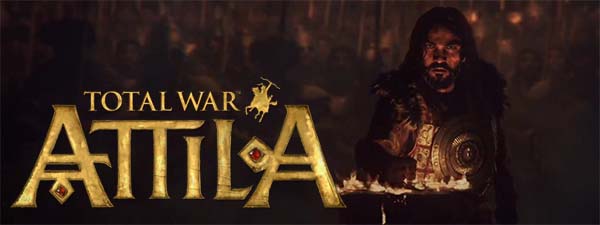
A few months ago, I posted an article outlining some suggestion for unique civilization themes and abilities for a possible Sid Meier's Civilization VI game. In it, I proposed a unique characteristic for the Huns or Mongolians: that they be a true nomadic empire. The idea was that they would have traveling cities that allowed them to move their empire with their army and essentially occupy any unclaimed territory or territory vacated by defeated rivals. Well, the Creative Assembly had already beaten me (and Firaxis) to the punch with Total War: Attila (and apparently Firaxis is embracing the idea with Beyond Earth's first expansion). Total War: Attila has a feature almost identical to what I had conceived for the Huns and Mongolians in Civilization. I'm a fan of the Total War series as is, so I was going to play this game for sure. Of course, Creative Assembly running with an idea that I had independently conceived of only made me more curious to play the game.
Attila acts as sort of a sequel to Rome II. While that game was all about building up the Roman empire (or whichever empire you happened to select), Attila is all about tearing down those empires. But this is a fully stand-alone game (like Napoleon Total War was to Empire Total War), and does not require Rome II in any way.
Learning how to be a horde
The Prologue campaign in this game is brutal! It's like a Demon's Souls tutorial that is designed to kick your ass. I restarted it once before realizing that it was designed for the player to fail in order to teach the new migration feature.
This prologue acts as a tutorial for the new features and mechanics of the game, but it doesn't do a particularly good job of teaching these mechanics. It also doesn't go into much detail of the established features of the franchise (other than telling you that a feature exists, then making you click on the button to do it), so new players might find themselves completely turned off by the fact that they are having their asses handed to them and aren't being taught much about how the game actually works, or - more importantly - why they are failing so hard. Perhaps having two separate tutorial campaigns would have been advisable: one to teach basic Total War concepts of empire and army management; and a second tutorial campaign for experienced Total War players that just teaches the migration features.
The brutal tutorial concludes with the challenging, climactic, historical battle of Adrianople,
in which your Visigoths must hold off Emperor Valens' superior army until your cavalry arrives.
Playing as migratory hordes minimizes city management, but you do still have to develop infrastructure for your nomadic armies. Rebuilding conquered cities and defending your borders, however, is not an issue - which was always the most tedious part of the game anyway. You don't need defensive armies in your territory and are free to focus all your efforts on your eventual goal. This change works well with the requirement that all armies must be attached to generals, and is a big step up from Rome II. There were large chunks of Rome II's campaign in which I felt like I couldn't do anything because I had to camp out my armies in cities in order to replenish and improve public order. Since I was at the army cap, the campaign would stagnate because I couldn't build new armies in order to watch over my newly-conquered settlements while also pressing forward with my primary armies... [More]
da530405-0213-4b1a-93c4-503924d797fd|0|.0
Tags:Total War, Total War: Attila, Creative Assembly, Sega, PC, Steam, Attila, Attila the Hun, Huns, Rome, Western Roman Empire, Eastern Roman Empire, Constantinople, Byzantine Empire, Sassanid Empire, Europe, Goths, Visigoths, Ostragoths, Germanic tribes, Franks, Saxons, Vandals, strategy, turn-based strategy, real-time strategy, grand strategy, history, campaign, horde, migration, climate change, the Great Migration, steppe, Sid Meier's Civilization, war, nomad, siege
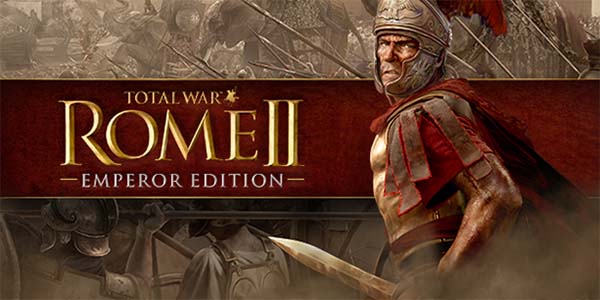
A couple years ago, I wrote an impressions post for Total War: Rome II with a tentative review score of 5 out of 10. I never got around to writing a full review of the game because it remained in a near constant state of flux for over a year after its release. The developers kept adding new DLC ranging from modest culture packs to the tiny Blood & Gore pack. Last year, Creative Assembly released a massive DLC pack that also included across-the-board balance updates and expansion of some of the game's core features. This "Emperor Edition", and its attached Imperator Augustus campaign was free to everyone who bought the original Rome II, and so I decided to give it a try to see if it greatly improved the game.
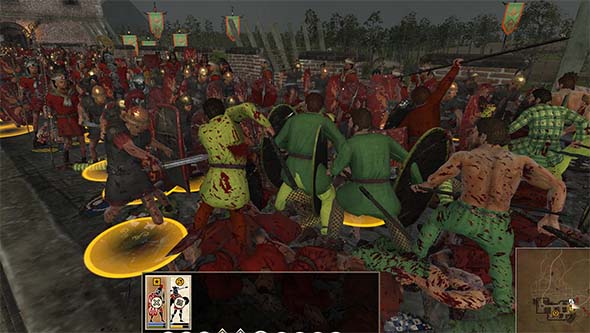
Blood & Gore costs a few dollars extra for those who want it, and increases the ESRB rating to Mature.
Core gameplay has subtle changes
Most of the changes to the core game are subtle, but they do add up to create a more enjoyable experience. The A.I. isn't nearly as bad as it originally was, and naval battles are actually playable now. Building effects have been completely rebalanced in order to avoid the problems with rampant squalor and lack of food that plagued the core game, and the politics systems have been changed to be more active and relevant to the game. Unfortunately, many of these changes are so sweeping, that they break existing campaign save games, meaning that if your version of Rome II was automatically updated, then you lost the ability to continue with any of your previous campaigns.
The most notable changes to empire management is that resources and building upgrades allow for much greater specialization of your various regions. This combined with the rebalancing of squalor and food means that there is incentive to actually upgrade your buildings past the first couple of levels. You also have some more meaningful decisions on what buildings you want to build and upgrade.
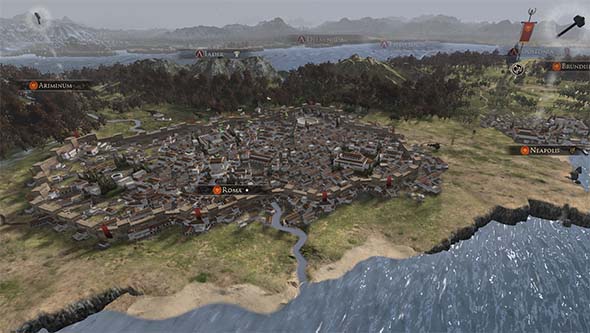
Squalor is no longer an intractable restriction towards building the glory of Rome.
Cities still physically grow on the map as the population grows and more buildings are constructed, and many of the high level buildings can add unique visual flairs to individual cities. It's also informative, since it's easy to see (at a glance) what infrastructure a city might have, which can help you manage your own empire, and can help you to assess the worth of a city for potential conquest.
A.I.s have also been designed to build higher-level settlements and to manage their armies better. Having higher-level buildings means that they have larger armies with more advanced units and better equipment. They provide a much greater challenge, as well as more tempting targets of conquest now. I haven't run into situations in which major factions (Carthage) dissolve into rebellions at the start of the game like I used to see in the base game.
Higher morale means battles last longer
Perhaps the best improvement that's been made by the post-release patches and the Emperor Edition is that the real-time battles are paced much better. Unit morale has been significantly tweaked so that units don't route and flee as soon as they make contact with a superior enemy force. Battles will generally take more than just a couple of minutes to complete, but they still aren't anywhere close to occupying the entire hour that the battle timer allows.
You'll actually have time to move some support units to help out an outnumbered defender before they flee, so there's also a lot more strategy involved in the individual battles. Reserve forces and cavalry flanking maneuvers have more relevance, and generals actually have time to reach front-line units in order to use their powers. You don't have to just clump all your units together in a single wall and ram them into your opponent anymore. You can even engage the enemy with a smaller force if you are stuck having to wait for reinforcements to arrive.
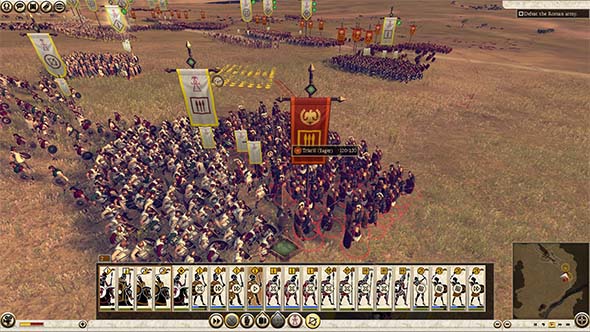
Tactical battles are slower, making cavalry and reserves more relevant, and allowing for more strategic thinking.
Speaking of cavalry, they are actually useful now, since units are generally more responsive to movement commands. In the initial launch version, I found cavalry to be useless because once they engaged an enemy unit, it was almost impossible to disengage without the whole unit getting routed or wiped out. Basically the only thing they were useful for was chasing down enemy skirmishers or flanking artillery. Now, I actually build and use cavalry because they are useful for hit-and-run attacks against regular melee infantry. You still want to keep them away from the pointy end of spears and pikes, but that's to be expected.
I still wish the battles were slowed down a little bit more, but the pacing is a lot better than it was at release. I still rarely see battles last more than 5 minutes of actual fighting, and I still routinely have to pause the game in order to issue orders because unit movement and combat happens so fast ... [More]
457b05a7-62ac-45d9-a1b0-5c8730e665e3|0|.0
Tags:Total War, Total War: Rome II, Rome: Total War, Creative Assembly, Sega, PC, Steam, Europe, Rome, Roman Empire, strategy, grand strategy, real-time stratey, turn-based strategy, history, campaign, war, siege
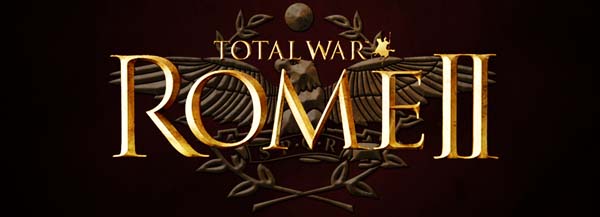
I had high expectations for Total War: Rome II. Shogun 2 is one of my favorite games of the recent years, and its second expansion Fall of the Samurai made it even better!
Total War is one of the few game franchises that has managed to keep itself outside of the grasp of the casual-gaming market, and has time after time provided some of the deepest, and most engaging strategy games available. But it was only a matter of time before Sega and Creative Assembly began to treat their flagship franchise as a mainstream release rather than a niche title, and they chose to begin with Rome II. The result is a series of questionable changes to the way the game is played, a dumbing-down of the overall interface, a gutting of features, and a host of bugs and balance issues in a game that feels more like a paid-for beta than a full release.
Creative Assembly has been tweaking the game with patches every one or two weeks since release trying to bring the game up to par, so it's in a state of constant flux as major balance tweaks, mechanic changes, and even new feature sets are being introduced. As such, I don't feel it's appropriate to fully review the game quite yet, and I will treat the release version more like a public (paid for) beta. Hopefully, the game will see marked improvement, and it will not end up like disastrous SimCity "reboot". I also wrote an impressions post about that game, but never got around to a full review because the game never became worth playing.
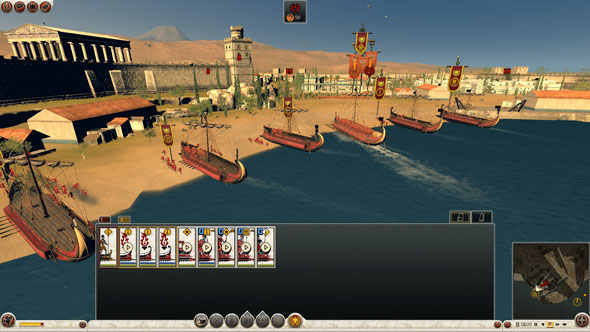
The most immediately noticeable area in which depth and control have been lost is in the interface. I'm not going to complain too much about the campaign interface, since it still has most of the information that you would expect. Provinces are divided up into regions, and each region contains a settlement, but the province interface allows you to manage all the settlements in the province. This is a little bit of streamlining that makes sense. You don't have to manually click on every little settlement in order to give build orders or view public order. The only downside is that this system has minimized the role of resources. You don't build specific structures on improvements (such as mines or pastures). Instead, this is all apparently handled by the cities, which would be fine, except that now enemy armies can't pillage your resources directly. Instead, a more abstract "raid" order has been tacked on to armies that lets them automatically pillage resources in the province. [More]
16b35275-69f2-4173-a1d4-b43ed9ead398|0|.0
Tags:Total War, Total War: Rome II, Rome: Total War, Creative Assembly, PC, Steam, strategy, grand strategy, RTS, TBS, Rome, beta, impressions, turn-based strategy, Sega, real-time strategy
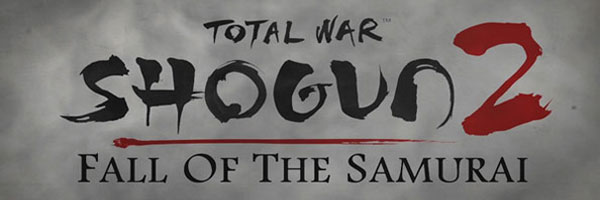
I finally published my full review of Total War: Shogun 2 recently in preparation for writing this review of that game’s second expansion: Fall of the Samurai. Fall of the Samurai is the second expansion for Shogun 2; the first being a “prequel” Rise of the Samurai. I skipped Rise, but when I saw the trailers for Fall, I just had to hop onto Steam and download it.
This expansion is the most contemporary Total War game to date, taking place during the same time period as the American Civil War. We’ve already had two Total War games that utilized rifles and cannons. I started my fandom of the series with Empire and went on to play Napoleon. I enjoyed both games, but eventually started to find the battles became very automatic and mechanical. There just wasn’t too much tactics beyond just lining your infantry up and shooting at the other guys.
Having not played the earlier games very much, like Rome, Medieval, and the original Shogun, I was really impressed with how fun Shogun 2 was. The traditional melee units made the battles much more engaging and fun, and really made me realize just how bland Empire actually was.
Table of Contents:
[More]
30f43459-cee3-48d3-922e-018cc75805c3|1|4.0
Tags:Total War, Total War: Shogun 2: Fall of the Samurai, PC, Steam, strategy, grand strategy, expansion, real-time strategy, history, Japan, the Creative Assembly, Sega
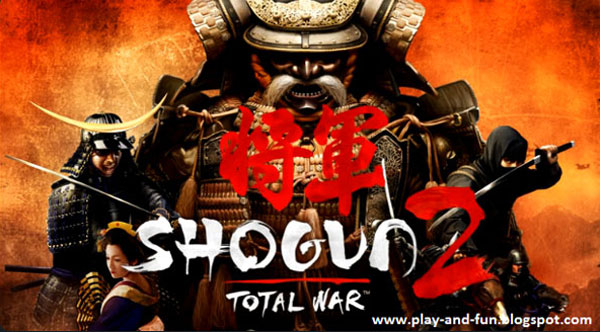
This review is exceptionally late! Even later than my reviews usually are. Shogun 2 was released almost 14 months ago, in March of 2011. I purchased it at that time, and spent several weeks playing it with the intent of writing a review. That review was never published though, and has been sitting on my computer for a whole year. With the recent release of the Fall of the Samurai expansion, I decided I'd dust off that year-old review of Shogun 2 and publish it.
.jpg)
So, here it is:
With Shogun 2, the Creative Assembly is taking its Total War franchise back to its roots by revisiting feudal Japan (the first game in the series was Total War: Shogun). Unfortunately, I never played the original Shogun. I started playing Total War when Empire was released, and subsequently played Napoleon and Rome. I consider myself a fan of the series now, as it makes for a great change of pace when I need a break from Sid Meier’s Civilization.
Shogun 2 blows the previous Total War games out of the water in almost every conceivable way!
Table of Contents:
[More]
97c66df3-de69-413f-9005-e1cd40a22f2d|1|5.0
Tags:Total War, Total War: Shogun 2, PC, Steam, strategy, grand strategy, expansion, real-time strategy, history, Japan, the Creative Assembly, Sega
|

| 12 | | | | | | | 60 | | 11 | | | | | | | 55 | | 10 | | | | | | | 50 | | 09 | | | | | | | 45 | | 08 | | | | | | | 40 | | 07 | | | | | | | 35 | | 06 | | | | | | | 30 | | 05 | | | | | | | 25 | | 04 | | | | | | | 20 | | 03 | | | | | | | 15 | | 02 | | | | | | | 10 | | 01 | | | | | | | 05 |
|